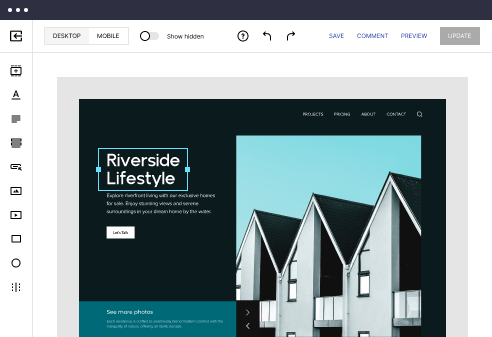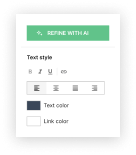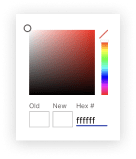
Fast loading HTML page templates
Use TemplateAbout template
Master the art of web design with fast loading HTML page templates. Transform your business today!
Recommended templates
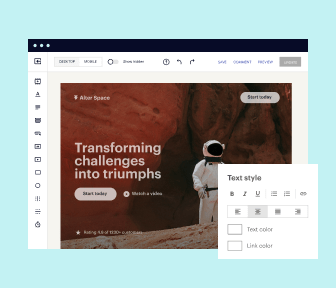
Easy to build without coding
With the intuitive drag-and-drop builder, anyone on your team can create high-converting pages without any knowledge of code or design. Make enhancements to your landing page with custom widgets using Javascript, HTML/CSS, or third-party scripts.
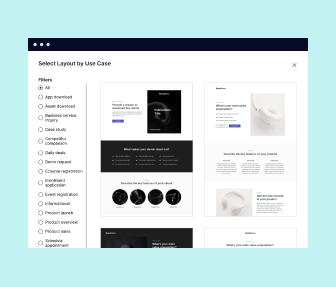
Multiple layouts for any industry and goal
Select from 500+ landing page layouts built to boost conversions across industry-specific scenarios. Customize them by adjusting fonts, adding images, and generating on-brand content with the AI assistant. Quickly scale with Instablocks® and Global Blocks that you can save, reuse, and update globally.
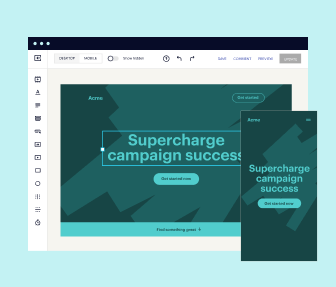
Loads fast and looks polished on any device
Every template is responsive, which means they present professionally on any device and load blazingly fast with our Thor Render Engine. You can also power them up with Google AMP technology to deliver an unparalleled mobile experience and drive higher conversions.
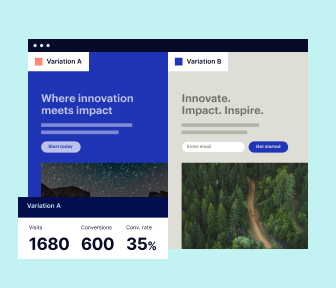
Robust analytics & experimentation
Get real-time updates and reporting across all your devices, showing the number of visitors, conversions, cost-per-visitor, and cost-per-lead. Launch AI-powered experiments, run A/B tests, and use heatmaps to analyze user behavior, then optimize your landing page to maximize conversions.
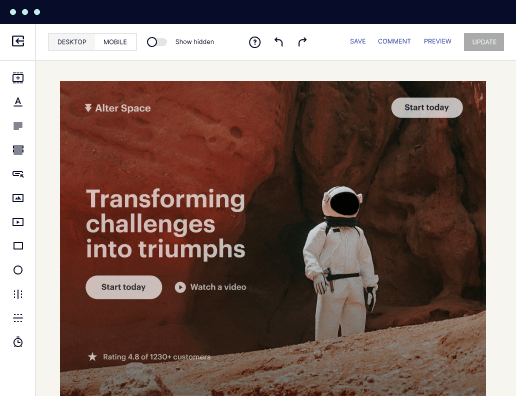
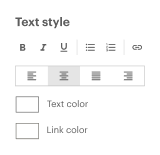
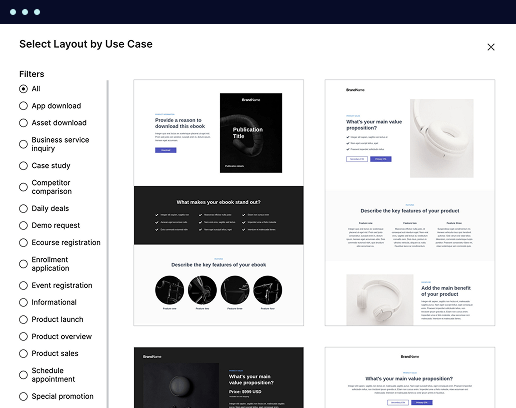
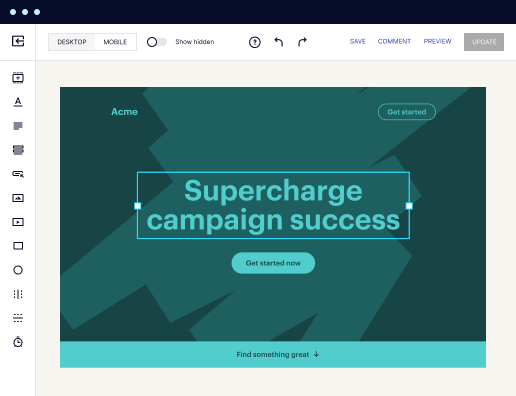

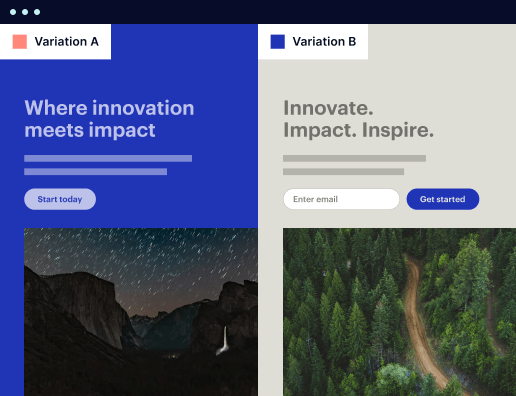
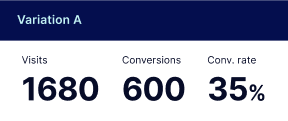
Easy to build without coding
With the intuitive drag-and-drop builder, anyone on your team can create high-converting pages without any knowledge of code or design. Make enhancements to your landing page with custom widgets using Javascript, HTML/CSS, or third-party scripts.
Multiple layouts for any industry and goal
Select from 500+ landing page layouts built to boost conversions across industry-specific scenarios. Customize them by adjusting fonts, adding images, and generating on-brand content with the AI assistant. Quickly scale with Instablocks® and Global Blocks that you can save, reuse, and update globally.
Loads fast and looks polished on any device
Every template is responsive, which means they present professionally on any device and load blazingly fast with our Thor Render Engine.
Robust analytics & experimentation
Get real-time updates and reporting across all your devices, showing the number of visitors, conversions, cost-per-visitor, and cost-per-lead. Launch AI-powered experiments, run A/B tests, and use heatmaps to analyze user behavior, then optimize your landing page to maximize conversions.
All the features you need to build loading page html template
Explore more featuresLearn how to build loading template html
Frequently asked questions about loading html template
Leading the way in building high-performing landing pages





Fast html examples: Your ultimate how-to guide
Fast loading HTML page templates are crucial in today's digital landscape. They ensure that your landing pages not only engage users but also maximize the conversion rate. Instapage provides a library filled with over 100 ready-to-use templates tailored specifically for marketers, equipped with lead generation elements designed to capture leads quickly.
Understanding the importance of fast loading pages
Fast loading pages significantly affect user experience and conversion rates. When pages load quickly, users are more likely to stay engaged and submit leads. This section delves into how page speed impacts conversion and marketing efforts.
- Enhanced user experience
- Users prefer sites that load quickly, reducing bounce rates and increasing time spent on your pages.
- Higher SEO rankings
- Search engines favor faster sites, improving your visibility and attracting more organic traffic.
- Increased conversions
- Faster loading times lead to more conversions, as users are less likely to abandon their journey.
Step 1: Choose the right template
Selecting the appropriate fast loading HTML page template is key to your success. Instapage offers a variety that caters to different industries and purposes.
Step 2: Optimize your content
Once you select a template, optimizing content is the next critical step. Use the following elements to enhance performance:
- Compress images
- Ensure images are optimized to reduce load times without sacrificing quality.
- Minimize CSS and JavaScript
- Reduce the size of your code to improve loading speeds.
- Utilize caching
- Implement caching strategies to enhance page responsiveness.
Step 3: Use A/B testing for tweaks
A/B testing allows you to make informed changes based on data. Here are key elements to test:
- Headlines
- Test different headlines to see which resonates more effectively with your audience.
- CTA buttons
- Experiment with different colors and placements of call-to-action buttons.
- Images and videos
- Determine which media performs best in capturing and retaining visitor attention.
Incorporating these practices ensures that your fast loading HTML page templates not only attract visitors but convert them into leads.
Start leveraging Instapage's powerful tools today to enhance your marketing strategy. Explore templates and begin your journey towards higher conversion rates!
People also ask about fast html template
Unveiling the power of fast loading HTML page templates
The digital landscape: why page load speed matters
In the ever-evolving digital landscape, page load speed has become a crucial factor for online success. Slow loading times can severely affect user experience, leading to increased bounce rates as users abandon sites that take too long to load. Statistics indicate that 53% of mobile web users abandon sites that take longer than three seconds to load. This is a staggering number that emphasizes how vital it is to have a fast loading webpage.
Moreover, there is a strong correlation between page load speed and user engagement metrics. Websites that load faster are likely to have lower bounce rates, higher session durations, and increased chances of conversions. It's not just about keeping users on the page longer; it’s about enhancing their overall experience, encouraging interactions, and driving actions that ultimately lead to conversions.
Load speed also plays a critical role in search engine optimization (SEO). Google, for instance, factors page speed into its ranking algorithms. This means that faster-loading pages are rewarded with better visibility in search engine results pages (SERPs). The long-term benefits of optimizing load times extend far beyond immediate user satisfaction; they translate into improved rankings, which can lead to increased organic traffic and enhanced credibility.
Understanding fast loading HTML page templates
HTML templates are pre-designed webpage layouts that users can customize to fit their specific needs. They come with predefined structures, styles, and sometimes even functionalities, helping users create webpages without starting from scratch. The difference between static and dynamic HTML templates lies in their adaptability; static HTML templates remain unchanged unless edited, while dynamic templates can respond to user interactions or data changes, making them more versatile.
Fast loading templates are specially crafted to prioritize speed. They employ optimized coding practices that minimize file sizes and reduce load times, making them essential for today’s fast-paced online environment. Key features include a minimalistic design approach, which emphasizes simplicity and clarity over visual clutter. A clean, organized template not only loads faster but also enhances readability and user experience, crucial elements for keeping visitors engaged.
Exploring template collections: a treasure trove of options
There are extensive collections of fast loading HTML templates available, each tailored for various industries and purposes. When exploring these collections, it's important to consider the specific needs of your business. For example, an eCommerce website may need templates that are optimized for product displays and user navigation, while a portfolio site may prioritize visual presentation and artistic flair.
When selecting a template, you should assess not only its aesthetic appeal but also its functionality. Look for templates with responsive designs that automatically adjust to different screen sizes, which is critical in a mobile-first world. Templates optimized for SEO will also support your visibility efforts, ensuring your content can be found and engaged with effectively. A well-chosen template not only elevates your brand image but also enhances overall website performance.
Coding and customization: the backbone of HTML templates
A basic understanding of HTML coding can significantly enhance your ability to customize fast loading templates. Essential skills include familiarizing yourself with HTML tags, CSS for styling, and basic JavaScript functionality for interactivity. With a grasp of these fundamentals, users can make modifications to the template, tailoring it to suit personal brand identities and specific marketing objectives. Sample code snippets can help beginners experiment with changes without significant risks.
For those looking to delve deeper, advanced coding techniques can be employed for further optimization. It’s important to utilize CSS effectively to minimize file sizes and improve load speeds. Furthermore, integrating asynchronous loading for scripts ensures that your page rendering isn't interrupted by loading external files, leading to a smoother and faster user experience. These practices not only enhance speed but can also add dynamic functionalities to your pages.
Robust hosting solutions: a critical component
The impact of hosting on website performance cannot be overstated. The choice between shared and dedicated hosting significantly affects load times and overall experience. Shared hosting, while economical, can lead to slower speeds when traffic spikes occur, affecting your site performance. On the other hand, dedicated hosting offers superior speed and reliability, providing resources that are not shared with other websites.
To optimize performance further, consider making use of Content Delivery Networks (CDNs). CDNs distribute your content across various locations worldwide, reducing the distance data travels to reach users. This can greatly reduce latency and enhance load speeds. Additionally, configure essential server settings such as caching options, GZIP compression, and proper image handling to enhance template functionality and loading efficiency.
The setup process: from template to live page
Setting up your HTML page from a template is a straightforward process when executed correctly. Begin by configuring and organizing your files logically. A typical setup includes creating a structure such as ‘css’, ‘js’, and ‘images’ folders to keep your assets organized. After initial configurations, integrating with a Content Management System (CMS) can further streamline the process, allowing for easier updates and changes in the future.
To ease the setup process, a detailed demo walkthrough can be invaluable. Screenshots and video tutorials that illustrate each step are excellent resources to avoid common pitfalls. It's crucial to pay attention to file paths and linking to ensure assets load correctly. Taking a methodical approach to setup can save time and reduce stress, allowing you to focus more on personalization and optimization.
Evaluating performance: review and analysis
Once your HTML page is live, it's essential to monitor its performance. Key metrics to track include load time, bounce rates, and user engagement. Tools like Google PageSpeed Insights and GTmetrix can provide valuable insights into how well your page performs. Through these tools, you can identify areas that may require optimization and adjust accordingly to improve user experiences.
In addition, conducting an in-depth review of popular HTML templates can help you understand the strengths and weaknesses of various options. Compare relevant factors such as speed, SEO-friendliness, customization options, and user testimonials. This analysis can guide future template selections and refinements, ensuring the best possible outcomes for your marketing and business objectives.
Conclusion: the future of landing page optimization
As technology continues to evolve, so do strategies for page load optimization. Future innovations will likely weigh heavily on faster and more efficient loading methods, enhancing user experience significantly. The necessity for speed will become even more pronounced, particularly in an age where every second counts. Marketers must remain focused on this aspect as they develop and implement their digital strategies.
Integral to this evolution will be the ongoing focus on user engagement and conversion rates. Fast loading HTML templates will remain an essential component in delivering optimal landing page experiences. By keeping abreast of trends and best practices, users can ensure they are equipped with the knowledge needed to thrive in a competitive marketplace.
Expanding your knowledge: further learning pathways
To enhance your HTML coding knowledge, consider pursuing online courses and tutorials that cater to beginners and advanced users alike. Platforms like Codecademy and Udemy offer an array of resources that can help solidify your understanding of web development concepts, standard practices, and coding techniques necessary for creating effective fast loading templates.
Furthermore, participating in community forums and engaging with expert blogs provides an avenue for continuous learning and knowledge sharing. Networking with other developers can yield additional insights and collaborative opportunities that promote growth. Engaging in online coding challenges or hackathons can also sharpen your skills while providing practical experience that enhances your understanding of fast loading HTML templates.
Ready to skyrocket conversions?
Supercharge your ad campaigns with high-performing landing pages
Get started